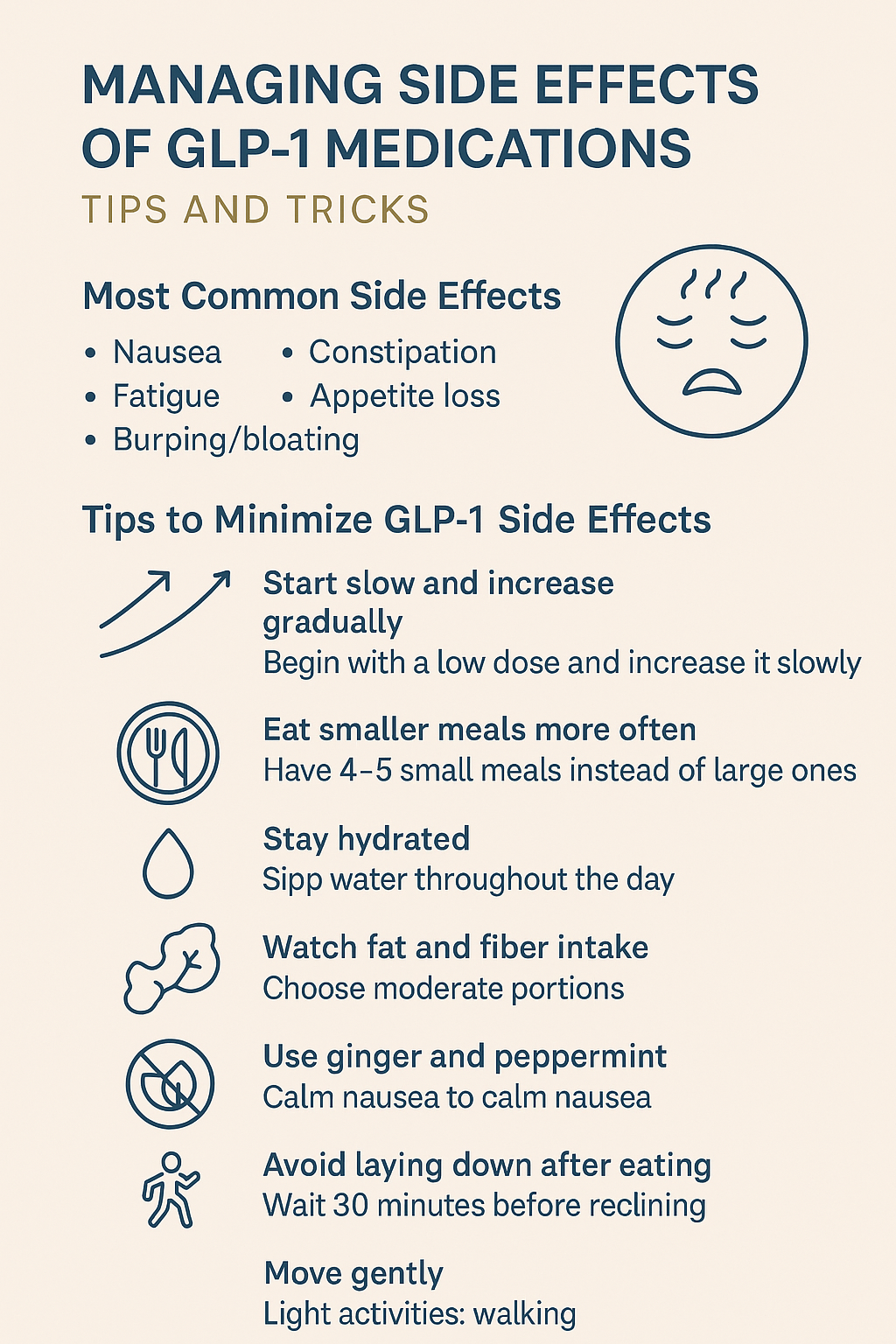Managing Side Effects of GLP-1 Medications: Tips and Tricks
GLP-1 medications like semaglutide (Ozempic®, Wegovy®) and tirzepatide (Mounjaro®) have been life-changing for many people working toward sustainable weight loss. But like any powerful tool, they come with an adjustment period.
Nausea, fatigue, constipation, and other side effects are common early on—but the good news is, most of these symptoms are temporary and manageable with the right strategies.
Here’s how to ease the transition and stay on track with your weight loss journey.
Most Common Side Effects
While not everyone experiences them, these are the most frequently reported side effects during the first few weeks of treatment:
Nausea or queasiness
Constipation or bloating
Fatigue or low energy
Loss of appetite (sometimes too much)
Burping, gas, or heartburn
These symptoms usually show up after a dose increase and fade over time as your body adjusts.
Why Do These Happen?
GLP-1 medications slow the rate at which food leaves your stomach (gastric emptying), which helps you feel fuller longer—but can also cause digestive side effects. They also affect appetite and blood sugar regulation, which can influence energy and mood.
The key is to support your body through the adjustment phase.
Tips to Minimize GLP-1 Side Effects
1. Start slow and increase gradually
Your provider should begin with a low dose and increase it only when needed. Never rush dose escalation—slower is often better.
2. Eat smaller meals more often
Instead of three large meals, try 4–5 small ones. Overeating, even healthy food, can overwhelm your system.
3. Stay hydrated
Dehydration makes nausea and fatigue worse. Sip water throughout the day and add electrolytes if needed.
4. Watch fat and fiber intake
Too much fat or fiber at once can slow digestion even more. Choose moderate portions and cook vegetables well.
5. Use ginger and peppermint
These natural remedies can calm nausea. Try ginger tea, peppermint oil capsules, or even sugar-free mints.
6. Avoid laying down after eating
Wait at least 30 minutes before reclining to prevent heartburn and indigestion.
7. Move gently
Light walking after meals supports digestion and energy levels without stressing your body.
When to Contact Your Provider
Mild symptoms are common—but you should reach out if you experience:
Severe nausea or vomiting
Rapid weight loss
Signs of dehydration (dark urine, dizziness)
Persistent fatigue or chest pain
At Well3, we monitor your progress closely and adjust your plan as needed to make your experience as smooth as possible.
You’re Not Alone—And It Gets Easier
Side effects can be frustrating, especially when you're eager to see results. But they’re typically a sign that the medication is working—and they almost always improve with time and support.
Need help navigating GLP-1 therapy?
We’re here to guide you every step of the way.
👉 Book your free consultation now
#GLP1SideEffects #SemaglutideSupport #TirzepatideTips #WeightLossJourney #HealthyHabits #GLP1Therapy #OzempicHelp #MounjaroSupport #Well3Care #MedicationManagement #GutHealth #SustainableWeightLoss

